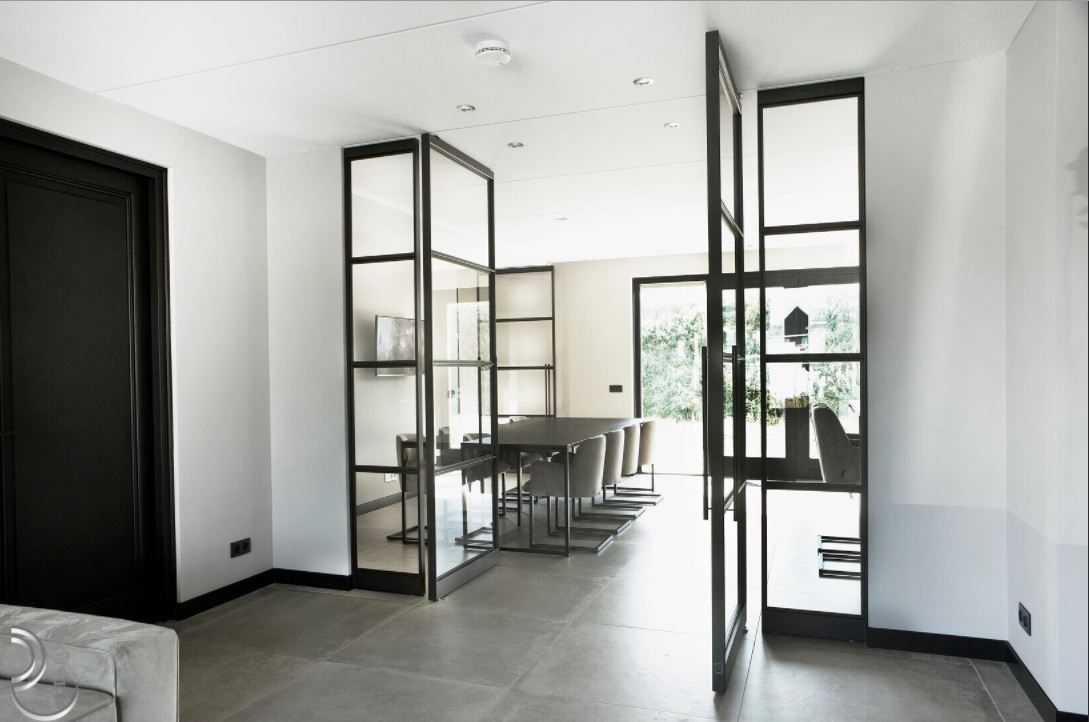How does a pivot door system work?

The world of doors is a vast one, with numerous types and designs to suit different needs and styles. From hinged and French doors to pocket, hidden, bifold, flush, Dutch, and sliding doors, the options seem endless. In recent years, there has been a growing addition to this list: the pivot door. In this blog, we will delve into the workings of a pivot door system and how it compares to a regular door system.
Regular vs. Pivot Doors
To understand the mechanics of a pivot door, it's essential to differentiate it from a regular hinged door. The primary distinction lies in the placement of hinges. In a conventional door, the hinge is mounted on the side, allowing the door to swing open on a horizontal axis. However, with a pivot door, the hinges are mounted on the top and bottom, enabling the door to rotate on a vertical axis.
This difference in hinge placement leads to a unique movement pattern. For instance, if you position a pivot hinge 50mm from the side of the door, it creates a 50mm 'tail.' The direction in which this 'tail' swings depends on whether you have an inward or outward swinging door. This unconventional movement is one of the distinguishing features of pivot doors.
Pivot door systems, like the FritsJurgens Pivot, take this concept a step further. All the mechanisms and components are reverse-engineered and concealed within the door itself, eliminating the need for a floorbox. This innovation enhances the aesthetic appeal, making pivot doors an increasingly popular choice due to their contemporary and nearly invisible appearance.

What's Included in a Pivot Door System?
A typical pivot door system consists of several key components that work together to enable the unique operation of pivot doors:
-
The Door: The door itself is a central element of the system, and it can be designed in various styles and materials to fit the desired aesthetic.
-
Pivot Mechanism: The pivot mechanism is crucial for the door's operation. It is mortised inside the bottom of the door and allows it to pivot smoothly.
-
Top Pivot: The top pivot is also mortised inside the top of the door, and it plays a pivotal role in ensuring the door's stability and balanced movement.
-
Floor Plate: In many pivot door systems, a floor plate is used to secure the bottom pivot and provide stability to the door.
-
Ceiling Plate: A ceiling plate may be included to secure the top pivot, adding an extra layer of support.
The hidden pivot mechanism at the bottom and top of the door is a key feature of pivot door systems. This design not only enhances the door's aesthetic appeal but also eliminates the need for unsightly floorboxes, making pivot doors an attractive choice for modern and minimalist interiors.
Advantages of Pivot Door Systems
The increasing popularity of pivot door systems can be attributed to several advantages they offer to architects, designers, and homeowners:
-
Aesthetics: Pivot doors provide a unique and contemporary look. The concealed pivot mechanism contributes to a clean, minimalist appearance that complements modern interior designs.
-
Functionality: Pivot doors open and close smoothly, and they can be designed to accommodate a wide range of sizes and weights. The pivot system ensures a balanced and effortless operation.
-
Adjustability: Unlike traditional hinged doors, the position of hinges on a pivot door can be customized, allowing for greater design flexibility. This adaptability is valuable for creating unique and innovative door solutions.
-
Design Scope: Pivot doors are versatile and can be customized to fit various architectural styles and interior design themes. They can be made from different materials and finishes to suit specific project requirements.
In conclusion, pivot doors are gaining popularity in the world of interior design and architecture due to their unique aesthetics, functionality, adjustability, and design scope. The concealed pivot mechanisms and the absence of floor plates make them a favourite among those looking for a sleek and contemporary door solution.
If you have any questions about pivot doors or want to explore design possibilities, don't hesitate to reach out to us. We're here to assist you in creating the perfect pivot door system for your needs. You can contact us at +44 (0) 208 253 9342 or email us at info@envo.co.uk.